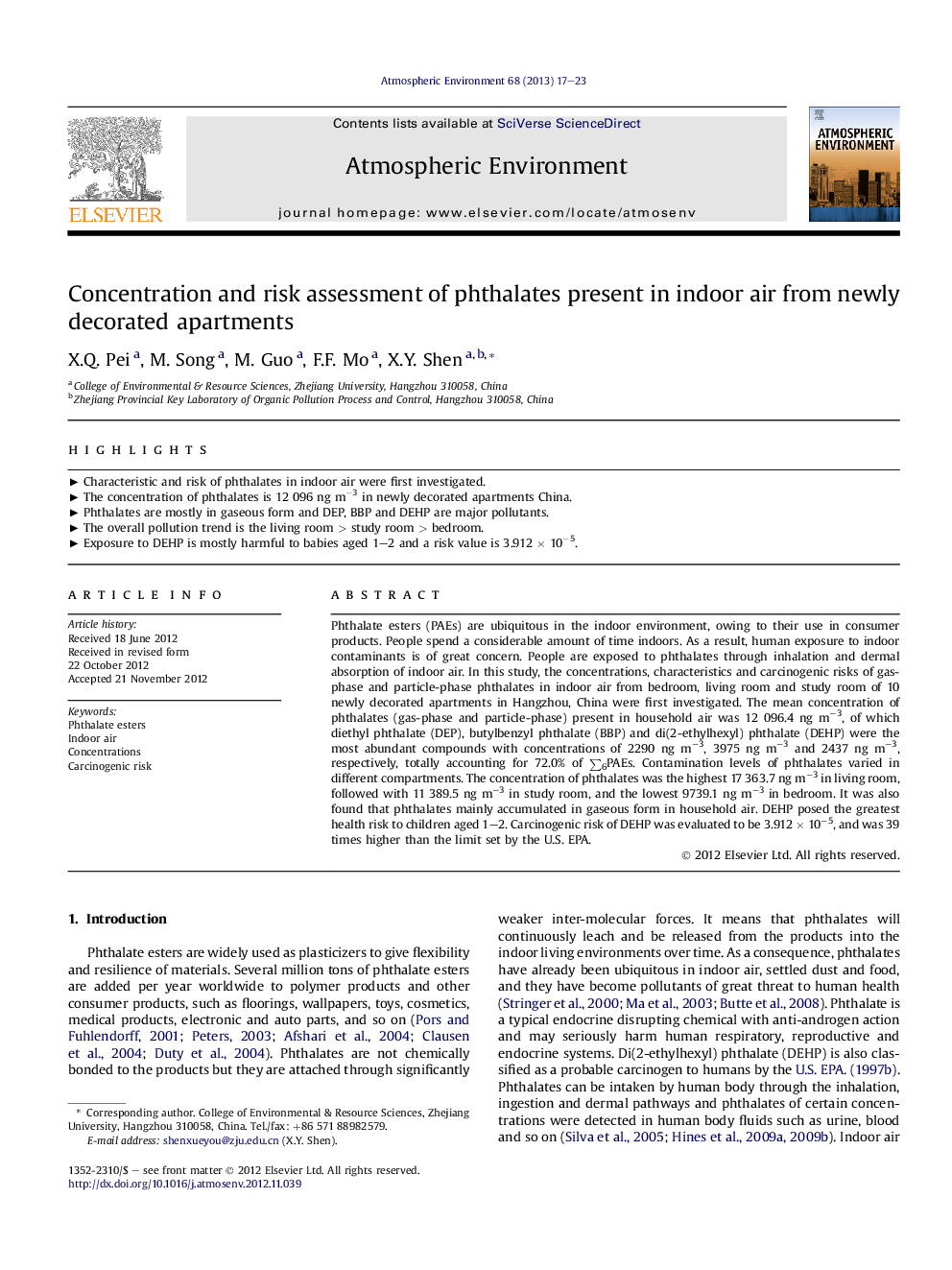| کد مقاله | کد نشریه | سال انتشار | مقاله انگلیسی | نسخه تمام متن |
|---|---|---|---|---|
| 4438425 | 1620403 | 2013 | 7 صفحه PDF | دانلود رایگان |

Phthalate esters (PAEs) are ubiquitous in the indoor environment, owing to their use in consumer products. People spend a considerable amount of time indoors. As a result, human exposure to indoor contaminants is of great concern. People are exposed to phthalates through inhalation and dermal absorption of indoor air. In this study, the concentrations, characteristics and carcinogenic risks of gas-phase and particle-phase phthalates in indoor air from bedroom, living room and study room of 10 newly decorated apartments in Hangzhou, China were first investigated. The mean concentration of phthalates (gas-phase and particle-phase) present in household air was 12 096.4 ng m−3, of which diethyl phthalate (DEP), butylbenzyl phthalate (BBP) and di(2-ethylhexyl) phthalate (DEHP) were the most abundant compounds with concentrations of 2290 ng m−3, 3975 ng m−3 and 2437 ng m−3, respectively, totally accounting for 72.0% of ∑6PAEs. Contamination levels of phthalates varied in different compartments. The concentration of phthalates was the highest 17 363.7 ng m−3 in living room, followed with 11 389.5 ng m−3 in study room, and the lowest 9739.1 ng m−3 in bedroom. It was also found that phthalates mainly accumulated in gaseous form in household air. DEHP posed the greatest health risk to children aged 1–2. Carcinogenic risk of DEHP was evaluated to be 3.912 × 10−5, and was 39 times higher than the limit set by the U.S. EPA.
► Characteristic and risk of phthalates in indoor air were first investigated.
► The concentration of phthalates is 12 096 ng m−3 in newly decorated apartments China.
► Phthalates are mostly in gaseous form and DEP, BBP and DEHP are major pollutants.
► The overall pollution trend is the living room > study room > bedroom.
► Exposure to DEHP is mostly harmful to babies aged 1–2 and a risk value is 3.912 × 10−5.
Journal: Atmospheric Environment - Volume 68, April 2013, Pages 17–23